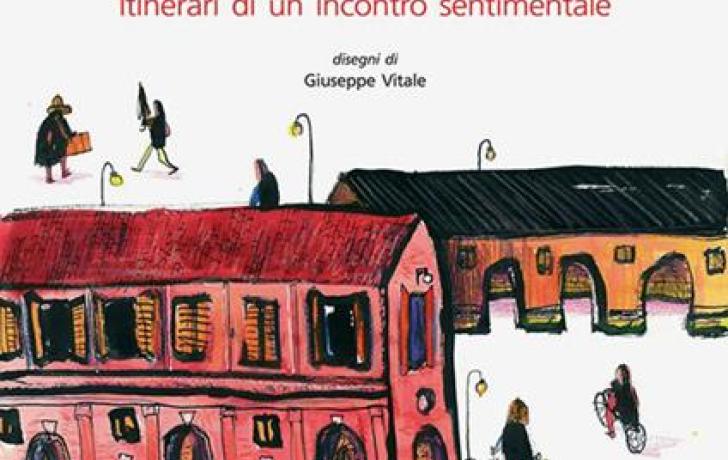Everyone knows that Bologna is the city of porticoes par excellence, but this pre-eminence must not overshadow the historical presence of porticoes in the other cities, towns and hamlets of the Po Plain. From Modena to Correggio, from Ferrara to Gualtieri and from Pieve di Cento to Sabbioneta, this external-internal space distinguishes and shapes the social life and character of its residents. In this recent book, the authors - all from the Mantua area - present itineraries that lead to the discovery of Po Valley porticoes, accompanied by stories and recollections tied to them. The impression that the reader gets is that of a chorus of many voices on the essential role that porticoes, spaces for gatherings and sentimental places, play in their lives and in those of many readers.
In the introduction, Simone Terzi, Director of Fondazione Un Paese in Luzzara, who continues the legacy of Cesare Zavattini, speculates that porticoes, taken for granted by those who pass by them every day, have to be rediscovered as spaces for the possible. He poses challenging questions and invites us to take a fresh look at what surrounds us, recalling Georges Perec and his “infraordinary” and the sharp eye of the Emilian photographer Luigi Ghirri. The goal is to understand if the porticoes are still the same place which “permitted engagement, dialogue, informality; a theatrical place for the market, exchange, protection, hospitable to diversity”.
Giacomo Cecchin offers a short narrative stroll through the centuries. Starting from the history of the portico as an architectural element, he analyses the different functions that it takes on depending on the context in which it stands: a monumental square or a convent, or a path of shops. Lastly, he celebrates the porticoes close to his heart.
Fabio Veneri takes us down a long journey amid the Po Valley porticoes through the words of artists, writers, singers and directors who have told their stories, and who have drawn inspiration from them. From the chief cities we penetrate into small towns lost in the southern Emilian plain, always accompanied by the emotion of feeling like we are in a familiar and reassuring space, but which also conceals potential mystery and surrealism.
Massimiliano Boschini, on the other hand, creates micro stories that spring forth from his own personal experience, set in a few of the porticoes dearest to him, where both the words of Zavattini and the local dialects and stories told by the town elders resound.
We have talked about its prose until now, but this book is also made of drawings: Giuseppe Vitale illustrates and accompanies the text with small sketches of architectural details and more or less well-known porticoes, and with colour plates, where the imagination relates and transfigures the most intimate nature of the portico and its hundreds of stories.
When closing the book, a kaleidoscope of all types of porticoes - famous or unknown, medieval or modern, modest or majestic - remains, as above all does the desire to visit them and discover the wonder of the places where we live.

